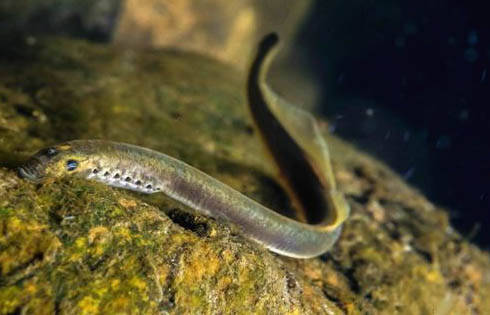The Latin name of Reissner's lamprey is LampetrareissneriDybowski, and its foreign name is ReissnerLamprey. It is a relatively small freshwater species.

The Lamprey's lamprey is a relatively small terrestrial species that is semi-parasitic and prefers to live in freshwater streams with slow currents and sandy bottoms. It hides at the bottom of the water during the day and comes out to forage at night. The development process undergoes metamorphosis, and the larvae enter the metamorphosis period when they are 160mm long. After metamorphosis, the digestive organs atrophy, the intestines are partially filled with tissues, and there is no parasitic nutrition period, and it directly enters the reproductive period. The spawning period is from the end of May to July. After spawning, some parents die, while others can survive. Adults are smaller than larvae. Larvae can reach 18.8 cm in length, up to 23 cm in length, and adults are usually 12-18 cm, sometimes up to 22 cm. Larvae mainly feed on plant debris and attached algae on sand and gravel, while adults feed on plankton and also live a parasitic life. When living a parasitic life, they often use suction cups to suck on other fish, use teeth and teeth on the tongue to file the fish body, and suck its flesh and blood with the piston movement of the tongue.
The Lampreys leucopsis is an ancient jawless vertebrate with important scientific research value. Due to factors such as soil erosion caused by vegetation destruction, river blockage, and water pollution in the distribution area, its resources have declined and the population has tended to decline.
Listed in the "China Red Book of Endangered Animals"; the protection level in the "China Red List of Species" is vulnerable.
Listed in the second level of the "List of National Key Protected Wildlife in China".
Protect wild animals and eliminate game.
Maintaining ecological balance is everyone's responsibility!